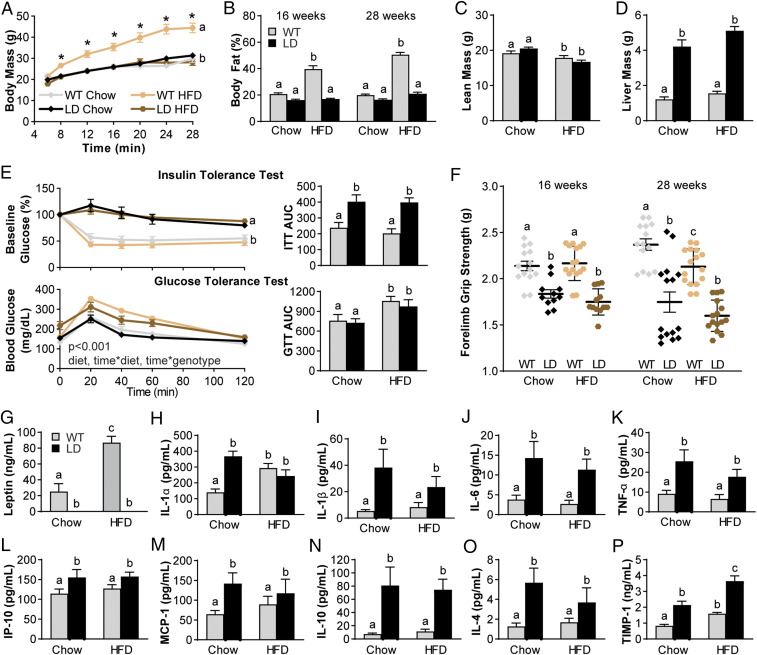Fig. 4.
HFD feeding of LD mice does not increase the metabolic derangement. (A and B) Body mass (A) and body fat (B) over time were only increased in WT animals fed HFD but not LD fed HFD. (C and D) Lean mass was decreased in both groups fed HFD (C), but liver mass was increased in LD mice to a similar extent even on HFD when compared to WT (D). (E) Insulin resistance by insulin-tolerance test was not affected by HFD, and differences were only observed by genotype, as in the AUC. Glucose sensitivity was reduced by HFD, as indicated in the AUC. (F) Muscle weakness was also decreased in LD mice and, at 28 wk, decreased in HFD-fed WT animals when compared to their 16-wk time point. (G) Serum leptin was increased in WT animals fed HFD but still completely absent in LD mice regardless of diet. (H–M) Levels of proinflammatory mediators that were elevated in LD mice were not further elevated by HFD (IL-1α, IL-1β, IL-6, TNF-α, IP-10, MCP-1). (N–P) Levels of antiinflammatory mediators IL-10 and IL-4 were similarly not increased by HFD in LD mice, but TIMP-1 was significantly increased. Data were analyzed as two- or three-way ANOVA with either Sidak, Tukey’s, or Dunnet post hoc (n = 10 to 18 per group). P < 0.05 between groups is indicated by the letters “a,” “b,” and “c.” GTT, glucose-tolerance test; ITT, insulin-tolerance test.

